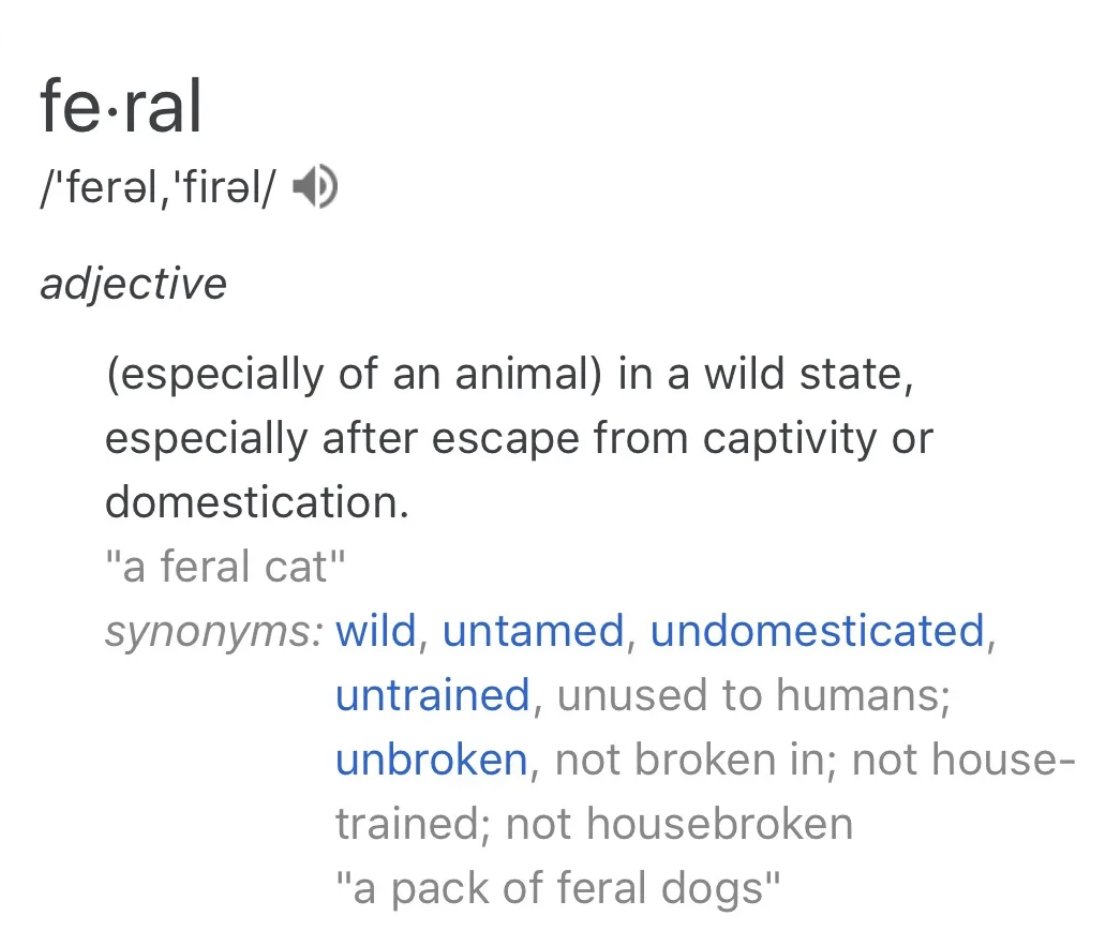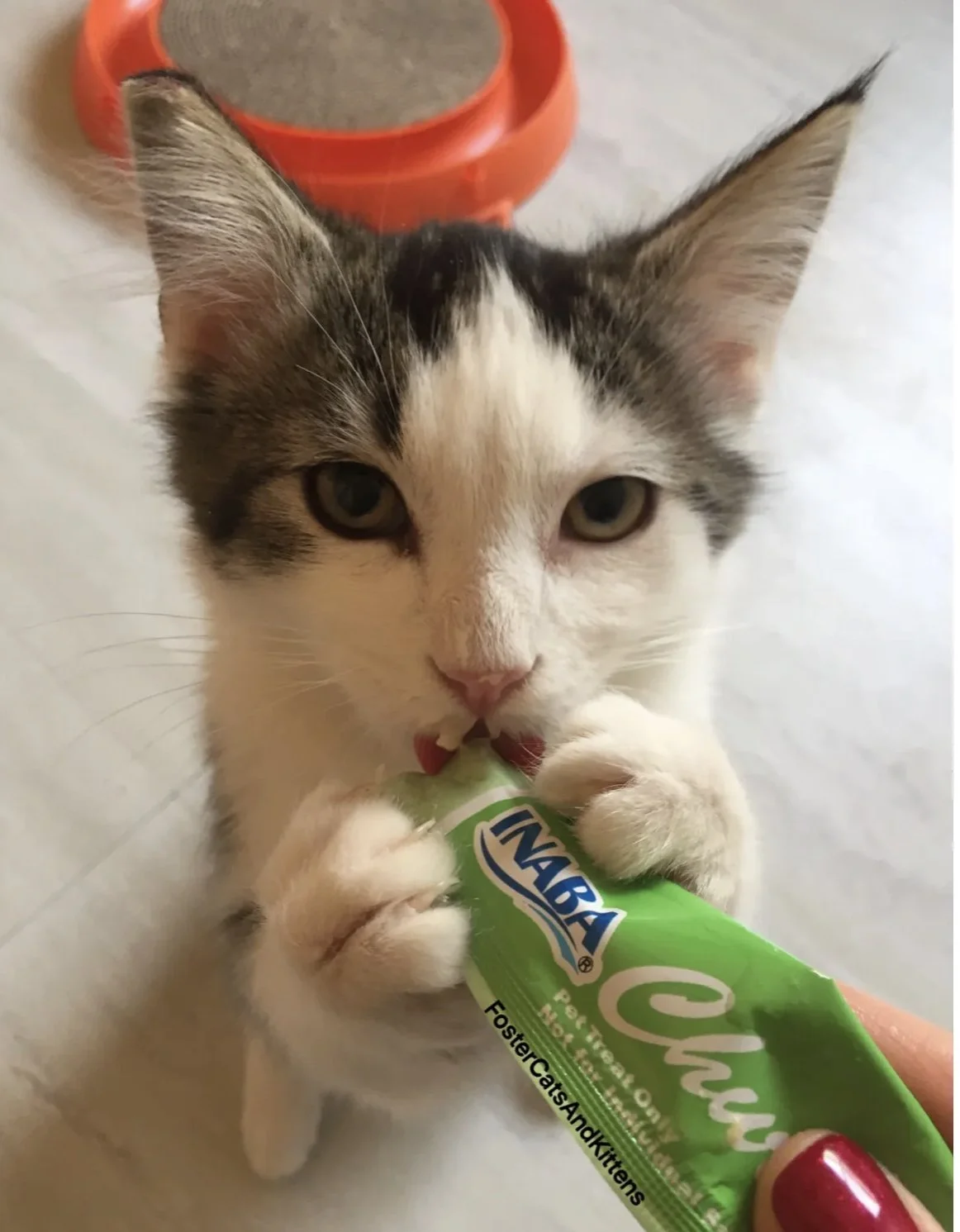SOCIALIZING A FERAL KITTEN…
Imagine this…. there you are, minding your own business, scavenging around looking for your next meal. Your mama and siblings are somewhere near by, but the aroma of food is leading you away from them. AHA!!! Jackpot! You’ve found it! Just as you sink your teeth into that tasty morsels of food, you hear a loud noise! You’re terrified, you’re trapped! Then some HUGE creature is coming at you and takes you in that trap away from the only life you’ve ever known. You’re so scared and frightened. You hiss, you swat, you scream, but there is just no getting away from this creature that kidnapped you.
Imagine, just imagine you had to go through that experience. Feral kittens are terrified of humans because they have never been exposed to them. They hiss, swat, spit and growl not because they are mean, it’s because they are afraid.
Now that you can hopefully have a better understanding and feel what they’re going through, it’s time for you to get to work and make that baby love you.
Socalizing a feral kitten isn’t too hard. It just takes time, love and patience. What does feral mean? According to dictionary.com, this is the definition…
I have socialized many kittens, and in this post, I will go over how I do it and what has worked for me.
When I first get the kitten, depending on how much room I have, I normally put them in my guest bathroom. I give them 24 to 48 hours to adjust. This means, I leave them alone (give them food, water and a litter box, of course). It is traumatic and scary for them, so they need to acclimate to their surroundings. If there are multiple kittens, after this short acclimation period, SEPARATE THEM! Feral kittens feed off each others energy. It is hard to socialize them when they are constantly running to each other and hiding together.
Pictured 4 out of 5 of the #Bratpackkittens who came to me completely FERAL. I didn’t have the option of separating them because there were so many and I didn’t have the space. Had I done that, I could have socialized them MUCH faster than I did (all of them were socialized and found amazing homes, with the exception of Demi, the one hiding in the back, who is socialized but still in foster care. You can read more on them by clicking on the tab labeled “Colony”).
Next, if possible, I set them up in a playpen in a high traffic area. For our house, that’s the living room.
This playpen is really great because it has a mesh top and mesh walls. The kitten can see out and observe the happenings of the house.
*Please note, I would strongly recommend having a 2-3 week isolation period and have the kitten blood tested before letting it around your resident pets. Safety first.*
To set up the playpen, include a litter box, food/water dishes, bed with a blanket covering it (easy just to throw the blanket in the washer and replace. The bed, not so much). Toys, a scratcher and I also like to line the playpen with puppy pads.
Another thing I have recently started doing, is using incontinent pads underneath the playpen. They are waterproof and can save your flooring (speaking from experience here). Bowls often get knocked over, the pads make it a breeze to clean up.
Now that the kitten is set up, here comes the fun part. Socializing. But, don’t push too much too fast. They can get overwhelmed.
FOOD IS YOUR FRIEND! I often use chicken baby food (make sure it doesn’t have onions) or fish push pops. Kitties can not resist the fishy, meaty smell. Some customers are more stubborn than others. When that happens, I take a very small amount and dab it on their nose. They’re forced to lick it and hey, wait, that takes good! You need to associate something good (food) with the big scary monster. Only feed them when you are right there, so every time their tastebuds are happy, they remember that you are always there for that moment.
If the kitten is hissy or swatty, you can use a very long spoon to feed them this (remember, safety first).
After the kitten has had a while to warm up to the surroundings, you can wrap him/her in a “purrito”. Basically what this is, is a blanket wrapped around the kitten like a burrito. You want their arms and legs tucked in, so you are safe. Hold that baby close to your chest and pet, kiss, talk to, and smother that kitten with love. They will be very tense and try and get away, but you need to wear the pants and show that baby who’s boss! Watch tv with him on your chest, walk around the house, do everything you can while holding this hissy little bundle of joy. Do this every day, several times a day.
Speak with a soft soothing voice and don’t make sudden movements. I swear, almost all of the kittens that come in our house gravitate towards my husband. BUT, feral or shy kittens are so afraid of him. He doesn’t speak softly and his movements are quick. This scares them. When I speak to them, it’s almost a whisper. I try and keep my voice low, monotone and soothing. Think of listening to a meditation guide. They instantly make you feel at ease and relax you. This is what you’re trying to accomplish.
During the day, I always leave a tv or radio on. If they are in constant quiet when you are at work, out of your home or asleep, when you try and talk to them and be around them, all of the noise is going to scare them.
Playtime! Playing with kittens can build trust. I would avoid loud toys, this tends to frighten them. GoCat Cat Chaser, Cat Dancer, play mice, and toys with catnip are especially useful.
You can use a product called Feliway. Feliway is a pheromone spray or plug in diffuser that calms cats. This pheromone mimicks the scent glands that cats have in their on their faces (think of a cat rubbing on a corner of a wall or rubbing your hand. They are emitting a scent and this is used to communicate to other cats). This can help calm kitty and make them feel more relaxed.
Ignore them. I know, this sounds counterproductive, but, I swear it works! If you’re sitting on your couch and kitty feels brave enough to jump up there, don’t move, don’t breathe, don’t speak! I know instinctually you will want to scream and jump up and down from joy, thinking you’ve broke down a barrier, but if you do that, you will scare him. Just act like nothing different just happened, let him explore. Don’t reach for him to try and touch him, without reacting, you’re showing him it’s safe. After he’s been there for a while and maybe lays down to get comfy, then gently pet him, but don’t over due it. This is when I seem to have the best breakthrough moments… when I ignore.
Another tip (pun intended) I learned is to tip that ear! An ear tip is when (under anesthesia) when the cat is getting neutered, they cut off the top part of the ear. This is a universal sign that the cat has been through a TNR program. If you’re trying to socialize and it’s time to neuter, make sure they tip the ear. If you are unsuccessful at socializing and have to put the cat back outdoors, it will be safe with its ear tip. If someone sees the cat, or it gets brought into a shelter, they will know it has already been neutered and is a part of a feral cat colony.
Kittens 8 weeks and under are fairly easy to socialize. When they get older than that, that’s when it gets really tough and there are times when you just won’t be able to socialize them. They are past the point of being able to be socialized and you have to do what’s in their best interest. You can want to keep them safe indoors, but that might be a living nightmare for them. I have had fosters that stayed with me for a year before adoption, but I truly saw something in them that showed me they could be socialized. I have also had others that I knew needed to be back outside and, as much as it broke my heart, I had to put them back outside. My point is, every cat is different and it is our job and obligation to be their voice and to do what’s best for them.
Do you have any other tips or tricks you use for socializing? I’d love to hear them in the comments below.







